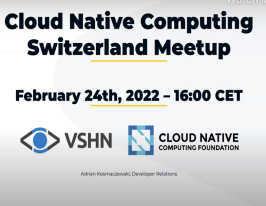Docker Dos & Do Nots @ Jfokus 2022
June 15, 2022
< 1 min read
Docker Dos & Do Nots @ Jfokus 2022
There is a popular phrase intended to communicate that there are many different ways of accomplishing the same thing: there are many ways to skin a cat. Whenever I hear this phrase, I understand the intention, but I always stop and ask who is out there skinning cats??? This talk is all about different ways of creating Dockerfiles. I’ll discuss things that I’ve seen and the reasons why you should be concerned about the details of how your Dockerfile is written. I will share the gotchas that I have learned and some of the pitfalls I’ve fallen into when I first started developing and maintaining my own Dockerfiles. Hopefully, my experience will help prevent you from suffering similar consequences as well as empower you with the reasoning behind certain practices and the avoidance of others. I’ll discuss the pros and cons of different methods and point out reasons why even though you can, maybe you shouldn’t… much like skinning a cat!






